#purple you ;3
Explore tagged Tumblr posts
Note
JIMMMMIIIIINNNNIIEE
I wish you the happiest of happy birthdays ever. May you eat a lot of cakes and enjoy the barracks celebrating you! Maybe you will get a day off from dity to see your family for your birthday but however. I wish you success, happiness, health and luck and I have send a rainbow cake with your favorite flavor and fruit to the camp!
Happy birthday my aegi #2!!!

Hyungiiie, thank you very much ! I'm sure they will make it loud pfff. It's a shame that this year it can't be with everyone... But I would happily see if I can have a day off !
Annnd thank you for cake ヽ(´ω`)ノ♡ I will make sure to enjoy it all by myself hehehe. After all, Hobi hyung made it for me hehe.

#jimin rp#park jimin#bts rp#•♫•♬• jiminie's reply •♫•♬•#hobi hyung (´。• ω •。`)#thank you very muuuch#purple you ;3#cakeu will be amazing
2 notes
·
View notes
Text

evening drive
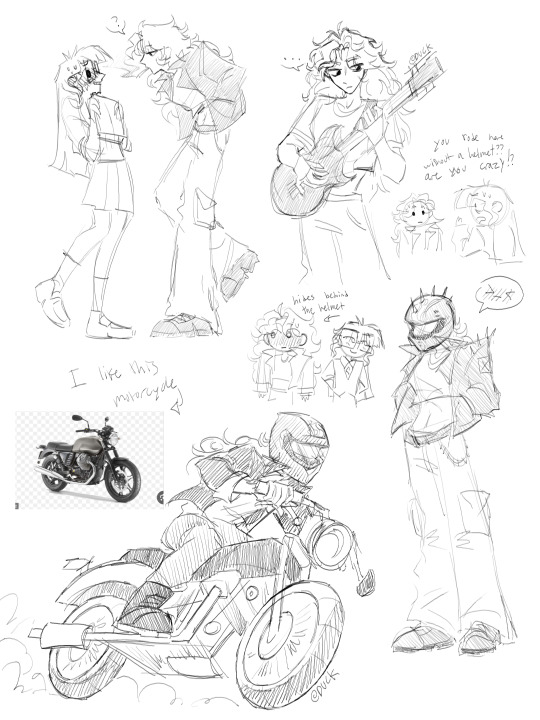
oh yes and some little doodles of them... sunset totally drives a motorcycle right?? been experimenting with how i want to draw her so maybe this'll stick idk.
#i use too much purple dont i#sciset#my art#mlp fim#mlp art#my little pony#mlp#twilight sparkle#eqg#mlp fanart#mlp eqg#equestria girls#scitwi#sci twi#mlp eg fanart#sunsetsparkle#sunset shimmer#ik the motorcycles dont match but i still havent figured out what i want hers to look like#aww lookit them they're both nerd weirdos#also thank you to the 12 different people i asked for advice when i was drawing this#3 point perspective is a pain in the.. back
4K notes
·
View notes
Text
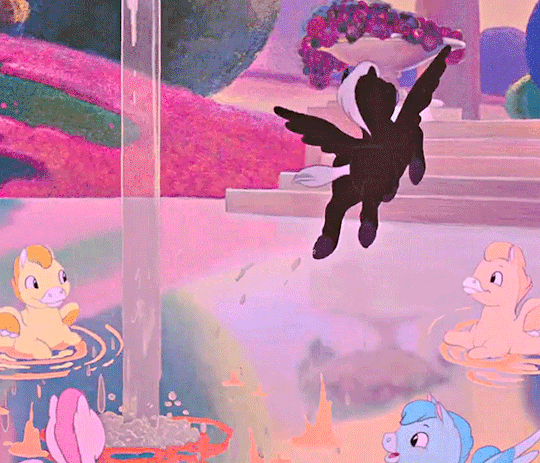
Fantasia (1940) - The Pastoral Symphony
#*relaxingifs#art#animation#fake animals#horses#purple#blue#pink#hands free#stim#sensory#calming#relaxing#monsters#pegasus#disneyedit#dailydisneysource#retrodisneydaily#soooo my main blog got terminated by staff i didnt receive an email....#so im gonna be posting some original gifs here hope you guys dont mind <3
7K notes
·
View notes
Text



favourite moments of bg3 -> (1/?)
#baldurs gate 3#bg3edit#gale of waterdeep#gale dekarios#gamingedit#dailygaming#gamediting#baldurs gate#stop looking at me with them big ol brown eyes if you dont want baldurs gate to see a real incident#puppy looking mofo i love you your white streaks and hairy chest#i dont know why the last gif is purple ish i remade it for 3 times then gave up stupid tumblr and stupid gif mb size#favebg3edits#myedit
2K notes
·
View notes
Text


The Dread Wolf's Eyes
#did I go through the effort of making gifs of just his eyes?#yes#do I regret it?#no#did I try to do this with other characters and my own characters?#also yes but they really weren't wanting to cooperate with my camera angles lol#so you just get the boi#and his pretty purple eyes#<3#reagan's gifs#reagan's gifsets#my gifs#my gifsets#solas#solas dragon age#dragon age solas#datv solas#solas dread wolf#the dread wolf#fen'harel#datv#dragon age#dragon age the veilguard#da4#da
2K notes
·
View notes
Text
Since I've seen it I couldn't stop thinking about it (please don't kill me x,,d)
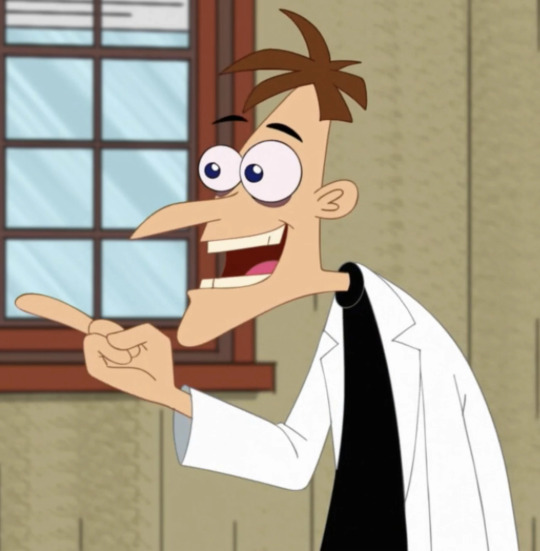


Ironically I think Doofenshmirtz and Perry's dynamic kinda could work with Mike and William




[second part here]
#actually mike would take perry's place#but taking into account how alike william and mike looked doof would make more sense to be compared with william#'cuz you know... mad scientist doing evil plans and all that lol#anyways they would be so silly and it's so fun to imagine them like that jhasjshs XD#oh- the wonders you can do as an artist x'd#fnaf#five nights at freddy's#michael afton#william afton#springtrap#fnaf fanart#art#my art#artwork#my artwork#drawing#illustration#digital art#digital artwork#digital drawing#digital illustration#artists on tumblr#fanart#videogame fanart#fnaf art#mike afton#scooped michael#purple guy#fnaf 3#heinz doofenshmirtz
6K notes
·
View notes
Text

Out of sight, out of - wait.
[First] Prev <–-> Next
#poorly drawn mdzs#mdzs#wei wuxian#granny wen#a-yuan#It's always fascinating how colours translate from the page to the screen.#It would probably surprise a lot of people to see what some of these comics actually look like in physical form.#My lighter colours takes about 3-4 washes before it shows up on scan which means it tends to ripple the page.#And my yellows and oranges are drastically different colours when scanned compared to the ink colour.#There's about 20 or so comics where everyone's hair is purple - because it scanned in the exact same colour as my light grey.#Wait my book is right here in front of me so I can...yeah...Comics 57-77 were indeed purple.#This is all to say - is it not fascinating how what we see is often not the full truth of what the subject truly is?#Is it not fascinating to open another episode that reminds us that despite everyone's claims they could totally spot the evil YLLZ-#-The man walks around among them for months as no more than a man haggling for deals like the rest.#It's almost as if he's just a person. It's almost as if none of us - no matter what we do are really anything more than just a person.#Your good acts will be overtaken by how other's interpret you in negative light.#Just as easily are people willing to forgive crueler actions if they hold you in high esteem.#But what's real? Is the page I hold the real version of this comic? Is it the one you look at?#Is the man known as Wuxian the most himself when he is alone or on the battlefield?#Perhaps he is and has always been a scared orphan boy lost in the market.#I think there is no good answer to any of these questions.#But I do know that panic rising in WWX as he frantically looks for A-yuan was for more than one boy.#To be human is to have layers around a delicate center. We only really grow around our wounds from childhood.#In other words; Donkey from Shrek would also probably call Wei Wuxian an onion. I'll see myself out now.
999 notes
·
View notes
Text
There's something like the anticipation of a Kiss...
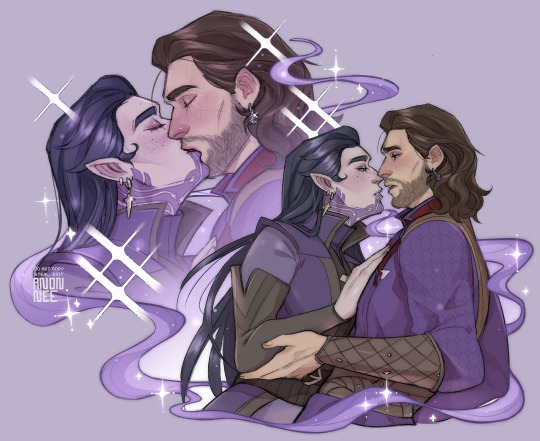
Purple magic nerds kissing. That's it. That's the post.
#bg3#gale x tav#bg3 gale#gale dekarios#oc: Tavlin#artists on tumblr#digital art#art#baldurs gate fanart#baldurs gate 3#baldurs gate tav#baldurs gate iii#dnd#dnd art#I love purple nerds kissing#he's so silly#mr dekarios I fear I love you#gale of waterdeep#btw this is supposed to be the scene where he shows you how to conjure the weave#Mystra can watch
4K notes
·
View notes
Text

"Wyll's the sort of prince-type I would have once dreamed of marrying. When I was about thirteen."
#quick silly thing..#baby astarion huge ears in a little cravat. if you even care.#baldur's gate 3#bg3#astarion ancunin#art tag#i kinda like the idea that his eyes used to be purple...#ik he was like trying to roast wyll but this line is kind of sad right 😭
2K notes
·
View notes
Text

believe it or not i am reading
[ID: A meme redraw of a quote-retweet with Scum Villain characters.
Luo Binghe @/shizunliker: you see me chasing you down wyd (Attached art of Luo Binghe running on Chinese rooftops while scowling)
Peak Lord Shen Qingqiu @/peerlesscucumber: Killing myself in front of you to forever change our bond and the trajectory of our lives. End ID]
#ID by princess-of-purple-prose! thank you :)#i'm like halfway through book 3 of svsss rn#so i'll probably be done reading the main plot and starting on book 4's extras on tuesday#depends#sorry i didn't wanna shade this though. and i used a stock photo bg#anyway#scum villain's self saving system#svsss#luo binghe#shen qingqiu#ren zha fanpai zijiu xitong#had to look at the front of the book to remember the chinese title#my art#fanart
2K notes
·
View notes
Text


i'm back!
ok so 2/3 days ago i found this youtube video where op turned Springtrap (or well, William Afton) into a fully build DnD character, and if i say so myself: things got out of hand fast
so here is my take on DnD Springtrap and specifically on that build (adding more infos under the cut for who is interested, i suggest to watch the video first)
starting with saying that unless you're playing in a scifi setting, this build is either not for you or to be modified, since in later levels spells are heavily centered around technomagic and electronic devices; personally when i will play him i will probably tinker around with the chosen spells and cantrips to make him less violently niche and/or more versatile
which kinda saddens me because it takes away not little of the characterization but, given most dnd stories take place in a medieval fantasy or high fantasy setting, a cantrip like On/Off or a spell like Remote Access are NOT particularly useful; so i will go for more psychic damage or necromancy oriented abilities, maybe i might take more than just 4 levels in artificier as well (especially given that again, all of those warlock spells at later levels are all technology oriented) but i need to see what those offer
however it is a kinda tank-y build given that with a shield on you can get up to a 27 of Ac, so even with low damage and not much hp you would not struggle too much to stay alive, and i like that!
as for the character himself, i put too much effort into my interpretation not to share it, so if anyone wants to play this guy as well, i fabricated a possible backstory that might come useful:
The character goes by the name "Dave Miller" (or whatever variant you want to use), and was originally a human artificier who created constructs for a living, mainly with the goal of offering aid to who needed it for whatever reason.
There however he ran into an issue, that being that a robot need a power source, and his own heart and lungs could not sustain a whole robot by themselves.
After losing part of his family to some kind of accident he became terrified of death, so with age he started replacing his own body parts with machinery to delay his last days (which made him a cyborg), until the point where he was very very close to become just a robot.
(This part may or may not involve a pact with a deity of death, this entirely depends on how you want to play him but it would make sense since the build is an artificier/warlock hybrid)
Through particular and very much not illegal experiments tied to necromancy he discovered that the life force of a living being could be shared, and used as a form of fuel. (possibly: age lived of the creature used= amount of extra months you get)
Here comes the second problem: this only worked with intelligent creatures, and more specifically, it worked best with creatures of your own race, which meant that he either went around murdering people or he found another solution. Non same-race creatures worked as well but not as good and there were not easy to find in the middle of a city and with a shop tied to your name.
And here is where and WHY he'd join a party of adventurers: after some time, his reserves or fuel were running VERY thin, and running into a group of adventurers was a god sent because by joining their party he essentially got a free pass to kill whoever he wanted, and reduce them to a dried raisin after sucking some life force out of them. Doing so you learn that the mowe powerful the creature is, the more energy it produces as well.
Your goal, that you as the player are following, when role-ing your character? essentially slay whatever powerful BBEG your Dm throws at you and suck all of that juicy fuel out of them, so that you can return to your little shop in the middle of the capital and return to create and sell whatever weird construct, doll, or robot comes to your mind for another few decades undisturbed.
And this is it. I think this might be a good backstory that could fit pretty much any setting you want to play this guy into, be it classic dnd or some scifi futuristic thing.
of course you don't NEED to use this one line per line, make up your own without looking back if you don't like it lol, dnd is the "make up shit and have fun" game after all!
Edit: also no his outfit makes no sense, i just went with vibes and decided a tanktop dress shirt, a twin tailed gilet and suspenders OVER said gilet was a good choice.
#not an ask#my art#illustration#fnaf#artist on tumblr#illustrtation#fnaf 3#fnaf 3 springtrap#springtrap#fnaf fanart#purple guy#fivenightsatfreddysfanart#william afton#fnaf 3 fanart#how many fucking tags there are about this guy jfc#dnd#dnd character#dnd art#dungeons and dragons#dnd charcter art#dnd artificer#dnd warlock#you have no idea what that video has done to me#i am not sane i am not normal#especially not about this guy#he was my first husbando and i am not ashamed of saying it#in retrospect maybe i should have taken the hint that i was into weird fucks lol#five nights at freddy's#IGNORE THE WRITING AT THE TOP OF THE FIRST IMAGE#that's from a graph i made to explain a friend when/if i use the robocock/robopussy when i draw/write robot smut
475 notes
·
View notes
Text






Decided to start the new year off right. So here she is, and here I am, manifesting for 2025:
a bounty of successfully finished projects
a wealth of awesome knight ladies in knight/lady relationships
In any case, painting this sure was a trip, especially since I'd never really seriously done anything like it before, and have only dabbled in ruining minis. Nothing here photographs well at all, sadly, so you'll have to just take my word on it that it all turned out pretty damn cool.




And now she can chill and guard my plants in her full resplendent glory.

She is... huge. But this is only right and appropriate. The level of tiny detail on her still meant I had to resort to toothpicks and needles (with the occasional Gundam marker assist).


And still I spent hours becoming intimately familiar with her elaborate... coccyx armour or whatever that is there. Also, getting her weird pseudo-marble statue skin colour right was very much a challenge.
The next thing I do, I think, will not be painting Isobel just yet (sorry). Instead, I might reach into the depths of my gunpla stack and build Aylin a fancy flying buddy.
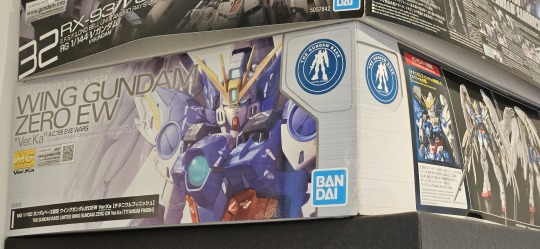
And then pose them so they're doing a wing high five or something equally silly.
#dame aylin#model painting#bg3#baldur's gate 3#hate that in the pics you can't see my use of different golds or the cool purple tones in the shadowfell rocks or anything... oh well
328 notes
·
View notes
Text
"introductions"






#pawu.art#avm#animation vs minecraft#avm fanart#avm purple#purple avm#avm king#avm king orange#avm orange#avm mango#bro has a million names help#also you can interpret this how you like; i porpusefully made it with no text so you can fill in the blanks on what theyre saying <3#sniffsniff found fmaily.........sniff.....
689 notes
·
View notes
Text
True Blue
→ Gojo Satoru x Fem!Reader (Series Masterlist)
Chapter 2: The Green Light

Content Warnings: college bf!gojo, long-distance, fluff, smut, established relationship, summer, phone sex, nudes, light angst, emotional tension, insecurities, gojo is rich and clingy! Minors DNI
Word Count: 2.6k words
Author's Note: had "Good Looking" by Suki Waterhouse on repeat as i wrote this. can you tell?

You had thought coming home for the holidays would mean endless days spent with Gojo, caught up in each other with nothing else to do in this sleepy town. Here, time moved differently, like honey trickling from a spoon.
Time spent in college had been different— there were classes, assignments, and the whole college thing — but now, time with him would be luxurious, unhurried, just the two of you, without the world pulling you apart.
But it had been two weeks since you last saw him.
To start with, your mother, in that peculiar way mothers are, still treated you as if high school had just ended yesterday. And then there was the summer ritual – three weeks spent with your grandmother, a tradition that pulled you three states away, leaving Gojo behind in all his boredom. The first week of summer had been his, or at least partially, for even then half of it was lost to the tournament that kept him longer on campus. Now, only a single constrained week and a month remained,
“So, you’ll be back by then?” he asks, a kind of hope edging in his voice. You almost feel bad.
“I don’t know—” you speak up. “I always spend three weeks. I don’t want to leave earlier.”
“It’s only a week early and it’s my birthday, baby,” he whined, his plea childish, like a boy who doesn’t understand why he can’t have everything he wants.
“I know, but we can always celebrate later,” you offered, knowing full well it wasn’t the answer he wanted.
“Okay,” he says, and you hear it, his voice is thin and worn. It’s not the first time he’s asked you to come back earlier, nor would it be the last. “How’s it going in Midsommar-land anyway? You need to start sending me more pictures or I’ll forget how you look.”
You scoffed, but there was a smile in it. It was the least you could do. “I promise, I will.”
You chat on about things, meandering through familiar territories. And when you finally ran out of things to say, Satoru started asking you about colors, shapes, chickens, and just about anything he could think of to keep the conversation going.
Four hours had passed, and the weariness in his voice was clear.
“Satoru.”
He hummed in response, his voice soft, almost dreamy.
“Go to bed,” you say gently.
“But I don’t want to,” he mumbled, the resistance fading even as he spoke.
“Yeah,” you said, understanding. “I know. I’ll call you tomorrow anyway.”
“Mmkay,” you hear him yawn through the crackles of the phone. “Don’t forget — pictures.”
You hummed in agreement, ending the call.
You fell back onto the bed, feeling the dull ache in your elbow from holding your head up for so long as you spoke.
The ceiling, plain and blue, stared back at you as you tried to think of what you would do today. And then it struck you — pictures first.
Your fingers moved quickly, perusing through the squares in your phone’s gallery, searching. But the images were all wrong— food, your grandmother, endless trees, and greens, but not a single one centering you.
You frowned, scrolling back to the last picture of you —a simple mirror selfie. The first week of summer, it dated. You were standing clad in Gojo’s tournament jacket and shorts. The memory brought a smile to your face.
You got up then, moving with purpose — like a mad scientist, you started to dig through your suitcase until you found it. You took your top off, as you pulled the jacket on. The heat was far too horrendous for both items layered on top of one another.
You fell back onto the bed again, the pillow soft beneath your head. You held the camera up — your hair spreading around your white pillow covers, with your face in focus.
You realized you looked tired, dark circles blooming like dark mold under your eyes, but your grandparents would return soon and you wanted to get this over with now and for all.
Click.
You drew your hands back a bit more, making sure the jacket engulfing you was visible.
Click.
Your eyes caught a glint— a silver shine at your neck. Of course. You reached for it, a delicate gold necklace with a blue jewel at its center, Gojo’s 6-month anniversary gift to you. You remembered the guilt you felt then, for you had given him a silly joke of a book in return.
It now lay over your — his hoodie — sitting against the hoodie, a small, almost hidden detail.
Click.
The phone was warm in your hand, the screen glowing softly in the dim light. One more, you decided. The last one.
You listened, straining for any sounds in the silence—footsteps, voices—but there was nothing, just the quiet of the empty house.
You pulled off the jacket, your movements quick but deliberate, and you lifted the phone above you, adjusting the camera before snapping a shot of you with your bare chest. Bare, but not entirely so — the gold necklace still graced your neck.
The moment passed as quickly as it came, as you pulled the jacket back on in haste.
You selected the last two photos, sending them in quick succession. The order mattered, after all.
—
The next morning, you had risen a bit too late in the afternoon. The light of the afternoon sun already slicing harshly through the curtain. The evening yesterday was eventful with the bonfires you helped build, and food you helped grill. It had been lovely. Exhausting. Glorious.
You immediately reach for your phone. Almost giddy with anticipation.
But when you opened the screen, there was only one message from Satoru.
Satoru <3: Pretty
The text specifically replied to the first picture you had sent, conveniently leaving the second unacknowledged. Your brows knitted together.
You tapped his contact and pressed the phone to your ear, the silence of the room amplifying each drawn-out ring.
Once. Twice. Then, the line crackled, and his voice came through, light and smooth.
“Afternoon,” he drawled. “Did you just wake up? It’s late.”
“Pretty?” you ask, agitated.
“I am? Thank you,” he says, you can almost hear the grin form on his mouth.
“Satoru,” you reply, it was your turn to whine now.
“What is it, baby?” he asked, feigning innocence. Oh, he was loving this, wasn’t he?
“Just pretty?” you asked, your patience stretched thin but still intact. You felt small, however, in an odd way you couldn’t explain.
“You’ll get more than that,” he said, “if you say you’ll come to my birthday.”
A groan escaped you. “Are you serious?”
“Yes,” he replied.
“You’re insufferable,” you muttered. “No more pictures for you. Ever again.”
And you only smile when you hear him fumble — words overlapping one another as though he’s finding one that’s appropriate enough to satiate you — to convince you to do both.
“I just want you here,” he said finally, the simplicity of the statement catching you off guard. “I really do.”
“You’ll see me two days later,” you countered. “You don’t even care about your birthday.”
“I don’t,” he admitted easily. “But everyone else does. You know my mother will make a whole thing out of it — the birthday will be loud. And annoying. I need you with me. Please—”
“You only want me there because it’ll be annoying,” you replied, your frown deepening, though a certain softness crept into your tone later. “It’s only two days. I’ll make it up to you, I promise.”
“Yeah, how? you’ll send me more pictures?” he asks, his voice lithe.
“I don’t know,” you teased, the earlier irritation melting away, as it does. “You didn’t seem to like the last one.”
Silence.
“I liked it,” he finally said, his voice lower now, almost reverent. “I did.”
“Yeah?” you asked, your voice lower, mirroring his. “What did you like about it?”
“I liked you,” he said. “You’re pretty.”
“I am?” you ask.
“Yeah,” he affirms. “Very.”
“Why thank you,” you said, the gratitude in your voice genuine, yet playful.
“I’m looking at it right now,” he continued, his voice taking on a breathy quality as if he were speaking more to himself than to you. “Pretty,” he murmured, devout.
“What’s pretty about it?” you prompted, curious and engaged now.
“You —” he says. “Want you here with me, so bad.”
“You want me there with you?” you ask.
“Yeah.”
“Where are you?” you ask.
“I’m— I’m in my bed.”
“Alone?”
“Yeah,” he says.
“Where are you?” he asks then.
“Well, I just woke up,” you replied.
“So, you’re in your bed too,” he surmised.
“Yeah,” you replied, pulling the cover up to your chest. “Hey,” you decided to add. “And guess what?”
“What?” he asks, chewing on his lips. “I’m wearing your hoodie too,” you said, and though he could not see you, you could almost sense his reaction.
"Fuck," he exhaled, the word barely more than a breath. "And, what else?"
“Um—” you start to feel a bit awkward. “Shorts. Black shorts.” Do specifics matter, you start to wonder?
“Bra?”
You glanced down, though you already knew the answer. "No," you whispered, the word slipping out before you could stop it before you could hide behind something safer. You cleared your throat, speaking up, clearer this time. "No."
“Fuck,” he says again. The mental image of you wearing his sweatshirt without any bra was driving him a bit hazy.
You rushed to break the tension, "Your turn."
"Huh," he responded as if he had lost track of the conversation, of where this had started.
“Tell me what you’re wearing.”
“Well, just sweatpants and a t-shirt,” his voice casual.
“Take them off.”
He chuckled, the sound soft, surprised. "As my lady pleases."
You heard rustling sounds, and you let your imagination wander to an image of him in his room. You’ve never seen his room, save for some hints in the many pictures he loves to send you, but you haven’t been to his place. Yet.
Based on what his dorm looks like, he’s such a boy. It doesn’t have a theme, just a mixture of things he’s collected erratically placed in places he could if you get the gist.
You wonder what color his room is.
You realize you’ve wandered too far, the tension that first filled the space between you two as he speaks is gone, as you’ve indulged your mind.
"They’re off," he stated, his voice bringing you back, grounding you in the present moment. "Now take yours—wait! Take only your shorts off. I like you in my hoodie."
You smiled at that, and just as you’re about to take it off, your hand lingering at the waistband, ready to comply when—
“Hey, sweetheart,” your grandmother’s voice cut through with the sound of your door hinging open, bringing you to notice that there is a world beyond the two of you.
"Grandma, what—" you stammered, your heart racing as you scrambled, about to cover yourself, though you realized a second later that you didn’t need to. You were still fully clothed, still just talking on the phone. You sighed. "What happened?"
“Oh, nothing, dear but if you’re not too busy… could you help Yuuji with the birds? He hurt his wrist this winter, poor thing, and I think he could use your hand.”
“Of course,” you sighed with a smile, a small and reluctant thing, forcing its way to your lips. “Just let me get dressed, and I’ll be down.”
“Tell that friend of yours you’re always talking to that I said hi,” she added, a warm smile in her voice.
You nodded, almost absently, the phone still pressed to your ear as she left the room, the door closing with a soft click.
“Grandma says hi,” you relayed.
"Tell her your friend says hi back," he responded, his voice carrying an edge now, a note of irritation that was impossible to ignore.
There were too many things left unsaid, too many disappointments lining up on the horizon—birthdays you wouldn’t be there for, a family you hadn’t yet told him about.
You felt the fairness of it, just a bit. There are many things at play right now — you hadn’t told your family about him, you wouldn’t be coming in time for his birthday — too many things disappointing a boy who’s used to having it all. "I’m sorry," you said, the words sincere. "I’ll call you in the evening. Same as yesterday.”
He made a sound that was neither agreement nor refusal, just a noncommittal hum. "Have a nice day," he muttered, and the line went dead, leaving you alone in the silence.
—
It was warm, and windy as you drove back home to see Satoru Gojo. You drove alone, aside from your backseat companions – jars and jars of condiments from Grandma.
His house was even more elaborate than you had first expected – a whopping red and white brick mansion. It was a mansion you thought one would only see in their extravagant imaginations but there it stood, just beyond the long stretch of a well-furnished garden.
As you pulled up – a man appeared. He was middle-aged, and greying at the temples. His manner was brisk, so formal, as he offered to park your car, and you simply let him. You assumed he was a chauffeur for the estate.
Standing before the entrance, you feel as though the mansion seemed bigger than when you first laid your eyes on it from afar. Looming. Its sheer size made you a bit dizzy and small as you stared up at it.
You walked up, your hand reaching to press the small buzzer on the side of the ornate door.
“Oh!” The voice belonged to a woman with bright eyes and an even brighter smile. “You must be here for the young master’s party?”
Young master. Satoru. You nodded, stepping inside.
And then you walked and you walked, and you started to wonder if they should invest in a vehicle for an inside the house.
Walking through a high hallway, you finally made your way into what seemed to be a living room or just a big room where there were a bunch of people pacing and talking about with drinks and sticks with food in their hands.
You assumed you finally arrived at the party, as the bright-eyed woman nodded at you as she left you to find your own steps now.
A breeze flew through the room just as you walked in, blowing the curtains in at one end and out like flags as you walked into where the concentration of the room lay.
The only seemingly still object in the room, amidst the whipping of the curtains and the moving guests, was the enormous white couch in the middle. And that’s where you saw him, Satoru, lounging, with a glass perched on the bridge of his nose as he spoke to a boy. The boy you barely glanced at — he was of no consequence just yet.
You approached, your eyes noticing the lines of his black shirt as it ruffled with the breeze. With each step closer, your courage grew, pushing to make your presence known to him, and the guests that surrounded him.
A sudden boom echoed through the room, and you turned just in time to see the same bright-eyed woman from earlier closing the long windows with a decisive motion. When you looked back, you noticed Satoru’s gaze had already fixed itself on you.
His brows, you could see, even through the glasses, emerged upward, in surprise.
Without thinking, you reached for his glasses, slipping them off as you spoke. “Hi,” you said. A giggle, a nervous giggle following you.
“You came,” he murmured, almost in a daze.
“Yeah,” you replied, a smile tugging at your lips. “I wouldn’t miss your birthday. What do you make of me?”
#college bf!gojo#a bit dramatic and more purple prosey than usual </3#gojo x reader#gojo satoru fluff#gojo satoru x reader#jujutsu kaisen fluff#jujutsu kaisen x reader#jujutsu kaisen x you#gojo satoru x you#gojo satoru x y/n#jjk x reader#jjk fluff#jjk x y/n#jjk x you#jjk x reader fluff#gojo satoru#gojo satoru x reader angst#jjk angst#jujutsu kaisen angst#gojo satoru angst#jujutsu kaisen x fem reader#gojo satoru x reader smut#gojo smut#jjk smut#gojo satoru x reader fluff#gojo satoru smut
628 notes
·
View notes
Text
was having trans marty thoughts again and i came to a realization about this scene

#back to the future#bttf#bttf fanart#marty mcfly#lorraine baines#lorraine mcfly#kit does an art#drew this one a while back and was hoping to save it until i compiled enough doodles in the same genre#but i like it better as a standalone picture bc it's funny so. here you go#poor marty he had so much going on in this scene alone#and if you think about him being trans it just adds another layer to that#1. just woke up from getting hit by a car#2. realized he wasn't dreaming and he definitely is in the past#3. that's his mom. in the past#4. his mom is HOT in the past. wasn't she born a nun or something this is wrong and terrible and he hates everything about this realization#5. where are his pants. why does he have no pants where are his pants. they're halfway across the room??? why are they over there#6. HIS MOM IS HITTING ON HIM???? his mom who is objectively hot in the past is hitting on him and he's in her bed with no pants on and ohhh#oh god. she took off his pants. to look at his underwear. and guys usually have something noticeably under the wear don't they. oh shit#7. SHE TOTALLY NOTICED. SHE'S GONNA ASK AND HE'S GONNA HAVE TO EXPLAIN THAT AND IT'S GOING TO BE SO AWKWARD AND BAD#8. there's no way someone in the 50s is gonna get it she's either going to think he's a girl (problem 6 is taken care of but replaced with#perhaps an equally uncomfortable experience) or like. they're going to stone him or something he doesn't know how they react to this stuff#in the 50s#luckily for marty the last 2 problems never happen but that still would've been a very stressful minute just thinking about it#she was so perplexed by the purple underwear ig she just didn't notice haha.#kit yap session#for the tags. as usual
337 notes
·
View notes
Text
oh this... now this is h o t

#hayden christensen#star wars#anakin skywalker#darth vader#apparently from the ahsoka bts oh fuck#god i cant wait to watch ittt HNNGNNGNG#and he's getting his hair fixed oh yes#aAAA#*updated with purple edit because i couldnt resist#if u want the og pic you can click on the source link#<3
185 notes
·
View notes